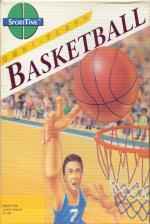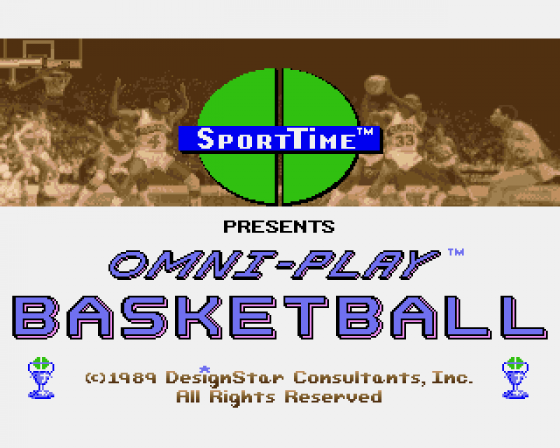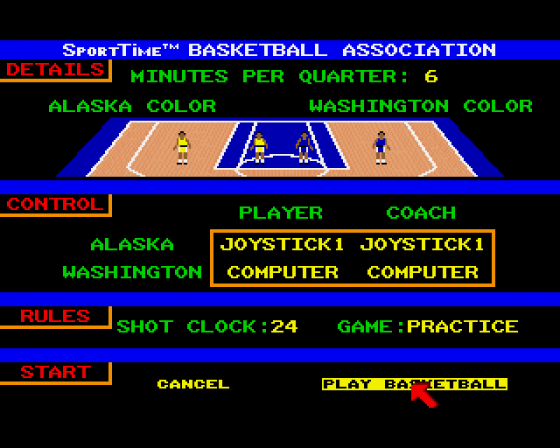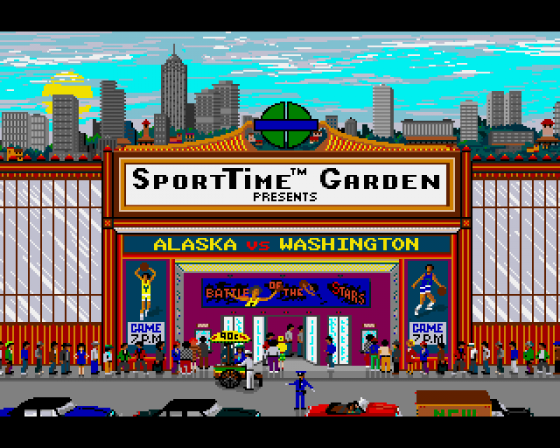
Commodore User
 1st August 1989
1st August 1989
Categories: Review: Software
Author: Mark Patterson
Publisher: Mindscape International Inc
Machine: Amiga 500
Published in Commodore User #72
Omni-Play Basketball
A modern sounding title and a trendy game to match. Gone are the traditional one/two player options followed by a basic game. In fact, you don't really get a traditional game at all.
Contained in the packaging of Omni-Play Basketball are two disks. One is nothing more than the game operating system, while the other disk contains the actual game modules. The first module contains all the details for the SBA league. With this scenario you can choose whether to coach (managerial option) or play ball (arcade option). In the arcade game you still have to take the part of the player nearest the ball, but since there are only five team members per side, confusion is limited.
Considering the complexity of moves in a basketball game, control of the team is quite simple. More important, though, the feel of the game is very slick and fluent.
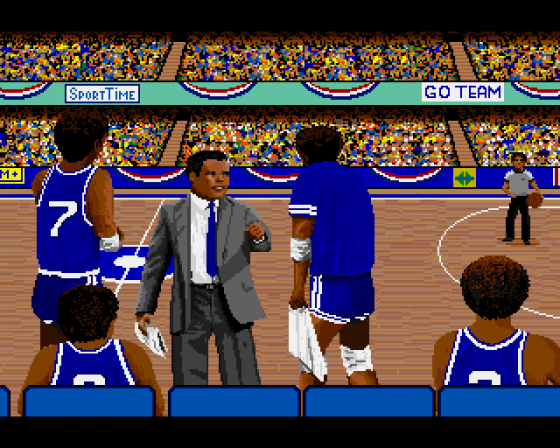
The managerial option is not very complicated, and mainly involves selecting the appropriate options then watching how the match will progress. If you feel like putting yourself totally in charge you can opt for a compromise between management and play. This gives you the best all-round control with the team, often giving good results; but it can cause some foul ups.
The second module, however, is very different from most other sports sims. Called End Play, rather than giving you an aerial or side-view of the court, you see the action from the end of the court. It's an original idea but confusing. Mindscape are promising more add-on modules, so who knows what to expect next...?
Probably the most striking feature about Omni-Play Basketball is its graphics. They are realistic and contain some fabulous touches. Depending on where you are in relation to the net, the player will lob, short pot, maybe even a slam dunk; the game just seems to change every time you play it. But it's the intermediate screens that really are impressive. Amongst others, they depict the coach giving the team a talking to, or the NBC reporters with teeth that look like an advertisement for Ultra-Brite. This sort of detail gives the game a slightly more professional appeal, albeit slightly reminiscent of Cinemaware's style.
This isn't a game which appeals only to die-hard basketball fans, it's too good for that. Everything about it is of a high quality, and it is exceedingly well programmed. The only flaw I found is one common to nearly all serious sport simulations: they just don't produce enough variety. With this game, the expansion modules might help to reduce that but it remains to be seen.
Other Reviews Of Omni-Play Basketball For The Amiga 500
Omni-Play Basketball (Mindscape International Inc)
A review by Gordon Houghton (C&VG)

